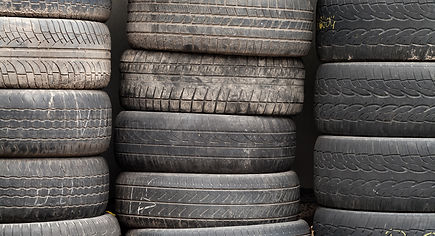
SUSTAINABLE
CONCRETE IS A SUSTAINABLE AND ENVIRONMENTALLY RESPONSIBLE PRODUCT THAT IS IDEAL FOR PAVING.
Diamond-ground concrete pavements require little maintenance when compared to asphalt rubber and are naturally sustainable with the following attributes:
-
SMOOTH & QUIET: The rigidity of the concrete enables a better grip and touch point of vehicle tires. This provides a quieter, safer and smoother ride than other paving systems.
-
PRODUCED LOCALLY: Concrete pavement is produced locally, with local labor, supporting local communities, which is great for the economy.
-
REFLECTS MORE LIGHT: Concrete has a high level of light reflectivity, making it safer to drive on at night. During the day, heat and light are reflected, reducing urban heat islands.
-
INCREASED FUEL EFFICIENCY: Concrete pavement increases fuel efficiency by 3-7% for semitrucks (saving 40 gals/1000 mi. driven) with similar savings in cars and light duty trucks.
-
NON-PETROLEUM BASED: Concrete is not petroleum based. There is no odor or stench when concrete pavement is placed or reheated daily by the sun.
-
100% RECYCLABLE: Concrete is fully recyclable; more than 140 million tons of concrete are recycled and reused every year.
Hot pavement surfaces, the urban heat island effect and poor air quality have a substantial impact on our health and environment.
Heat is the number one weather-related killer in the United States. Phoenix is one of the nation’s fastest-warming big cities.
Air quality gets worse as temperatures rise. (Climate Central)
-
"As temperatures go up, ground-level ozone goes up, making for poorer air quality."
-
"Ozone contributes to an increased incidence of lung inflammation, asthma attacks, and other respiratory problems, particularly in children and young adults."
In this interview, long-time Phoenix resident Holly Beeler discusses the urban heat island effect and the impact it has on the people—and pets—of Arizona.
OUCH – HOT!
On August 5, 2021, two drones were used to collect infrared imaging at two locations on SR202 to compare the temperature of three different pavement structures: a concrete pavement with a diamond-ground surface, a concrete pavement with an asphalt rubber surface, and an asphalt pavement with an asphalt rubber surface.
Click the image above for the report summary.
The results indicated that surfaces with asphalt rubber on top were always hotter than the diamond-ground concrete surface during a 24-hour period. In addition, the asphalt concrete pavement structure was the hottest of the three pavement structures and was over 25 degrees F hotter than the diamond-ground concrete at peak temperature.

Surfaces that are lighter in color are measured at higher albedo, or reflectivity of solar energy. The 0.2 difference in albedo between asphalt (0.1) and concrete (0.3) is enough to impact thermal properties in urban neighborhoods in Phoenix. Read more in the research brief "Quantifying the impact of pavement reflectivity on radiative forcing and building energy demand in neighborhoods".

Concrete pavement preservation with diamond grinding reduces green-house gas emissions in several ways. It minimizes construction activity, promotes vehicle fuel efficiency by providing smooth surfaces, and, with timely treatment, can more than double the amount of CO2 sequestered.
Read "Concrete Pavement Preservation and Climate Change," by Thomas Van Dam, Ph.D., P.E.; Principal, NCE
SUSTAINABILITY
At first it would seem sustainable to use asphalt rubber. However, rubber represents less than 10% of an asphalt rubber overlay's one-inch thickness. The other 90% consists of non-renewable aggregate (rock), which is getting scarcer in the Valley. On a ten-year asphalt rubber overlay replacement cycle, 424,000 tons of aggregate are consumed. This is equivalent to the amount of aggregate needed to construct 121 lane miles of new concrete pavement which would last for 50 years or more. So, every ten years, the aggregate needed to construct 121 more lane miles of concrete pavement is lost to the highway system. Concrete is a far more sustainable solution.
The Massachusetts Institute of Technology (MIT) published a Tech Brief suggesting that if all the roads in Arizona were constructed from concrete and not asphalt, the decrease in greenhouse gas production would be equivalent to removing 5.5% of the registered vehicles from the highway network.
One of the largest markets in the U.S. for scrap tires is tire-derived fuel (TDF). In 2019, 101 million tires were used as TDF, with 50% used in production of cement. http://tirederivedfuels.com/

YALE RESEARCH FINDS THAT ASPHALT COULD BE MAKING SUMMER AIR POLLUTION WORSE

In a new study published in Science Advances, researchers from Yale looked into asphalt as a source of secondary organic aerosols, which are a kind of particulate matter that have been linked to asthma and other insidious public health issues. The team found that under summertime conditions, asphalt may be a greater source of these polluting particles than gasoline and diesel from motor vehicles combined. See the report here.



